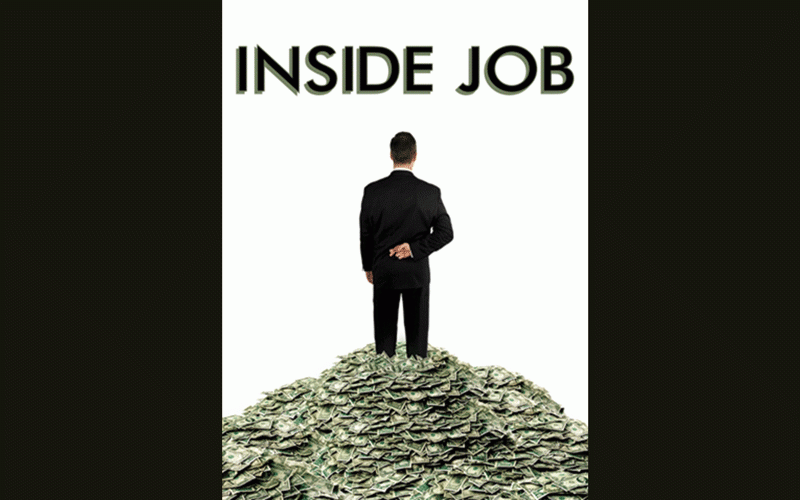
Directed by Charles Ferguson, Inside Job is a 2010 American documentary film that exposes the truth behind the global economic crisis of 2008. The shock had devastating effects and resulted in millions of people losing their money, homes and jobs. Through extensive research and interviews with major financial insiders and politicians, the film traces the rise of a rogue industry and unveils the corrosive relationships which corrupted politics, regulation and academia.
In this article, Piggy unpacks the main themes that led to a global recession in 2008.
Deregulation of financial markets
The film begins by examining the effects of the government of Iceland’s shift toward deregulation in 2000, which included the privatisation of its banks. Deregulation allowed banks to take more risk which resulted in them reporting “paper profits”.
In the end, total bank losses in Iceland amounted to US$100 billion versus Iceland’s GDP of US$13 billion. Similarly, the American financial industry experienced a long period of deregulation. Banks and loan companies were freer to gamble with depositor funds. Further, banks developed complex financial instruments, with income streams from bundled up mortgages, including high-interest home loans offered to high-risk borrowers (sub-prime market).
Role of analysts, economists
One of the most sensational aspect of the film is the contention that the crash corrupted the discipline of economics itself. Distinguished economists were drafted in by banks to compose reports sycophantically supporting reckless deregulation. They were massively paid for these consultancies. Firms involved were the Analysis Group, Charles River Associates, Compass Lexecon, and the Law and Economics Consulting Group (LECG). Conflicts of interest were often not disclosed in research papers. On the other hand, analysts in investment banks published research reports with “Buy ratings” on companies they knew would fail.
Derivative instruments, leverage
- Experts downbeat as Ncube cuts GDP forecasts
- New perspectives: De-link politics from Zim’s education policies
- Experts downbeat as Ncube cuts GDP forecasts
- New perspectives: De-link politics from Zim’s education policies
Keep Reading
The rise of investment banks and their growing influence over the US government led to risky financial innovations such as derivatives and mortgage-backed securities. Derivatives became very popular in the American financial industry in the 1990s. Efforts to regulate derivatives were thwarted by the Commodity Futures Modernisation Act of 2000, backed by several key officials. In the 2000s, the industry was dominated by five investment banks (Goldman Sachs, Morgan Stanley, Lehman Brothers, Merrill Lynch, and Bear Stearns), two financial conglomerates (Citigroup, JPMorgan Chase), three securitised insurance companies (AIG, MBIA, AMBAC) and the three rating agencies (Moody’s, Standard & Poor’s, Fitch).
Investment banks bundled mortgages with other loans and debts into collateralised debt obligations (CDOs), which they sold to investors. Rating agencies gave many CDOs AAA ratings. Subprime loans led to predatory lending. The result was that many home owners were given loans they could never repay. Investment banks such as Goldman-Sachs sold more than USD3 billion worth of CDOs in the first half of 2006. Goldman also bet against the low-value CDOs, telling investors they were high-quality.
When the market for CDOs collapsed, investment banks were left with hundreds of billions of dollars in loans, CDOs, and real estate they could not unload. The recession began in November 2007, and in March 2008, Bear Stearns ran out of cash. In September, the federal government took over Fannie Mae and Freddie Mac, which had been on the brink of collapse. Two days later, Lehman Brothers collapsed. Merrill Lynch was on the edge of collapse and was then acquired by Bank of America.
Wall-Street greed
As the good times rolled during the real estate boom, bank profits ballooned. They offered their analysts and traders mind-blowing bonuses to encourage risk-taking. The fact that banks were allowed to insure against bad debts with credit default swaps meant that any number of these insurance policies could be purchased against one particular risk. As a result, banks had a vested interest in selling risky products, as they themselves were insured with swaps. Another key observation was that top executives of insolvent companies walked away with their personal fortunes intact and avoided prosecution. The executives had hand-picked their boards of directors, which handed out billions in bonuses after the government bailout.
Fall of Lehman Brothers
The fall of Lehman Brothers resulted in a collapse of the commercial paper market. On September 17, the insolvent American Insurance Group (AIG) was taken over by the government.
The next day, Fed chairman Ben Bernanke asked Congress for US$700 billion to bail out the banks. On October 3, 2008, President George W. Bush signed the Troubled Asset Relief Program, but global stock markets continued to fall. Layoffs and foreclosures continued with unemployment rising to 10% in the US and the European Union. By December 2008, GM and Chrysler also faced bankruptcy. Foreclosures in the US reached unprecedented levels.
In conclusion, Inside Job exposes how the financial industry prioritised profit over people, leading to one of the worst economic disasters in history. It has also been lauded for its clear and accessible presentation of complex financial concepts, making it informative for viewers regardless of their prior knowledge of economic matters. Its compelling narrative and thorough investigation make it a crucial viewing for those seeking to understand the intricacies and consequences of the financial crisis. For more insights, be part of the fastest growing network of trading and investing enthusiasts by joining a PiggyNetwork WhatsApp Group. Contact Piggy on +263 78 358 4745
Matsika is the creator of the PiggyNetwork. — +263 783 584 745 or [email protected].











